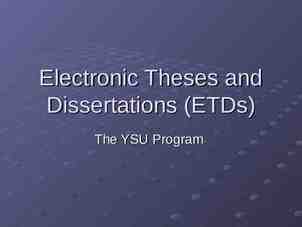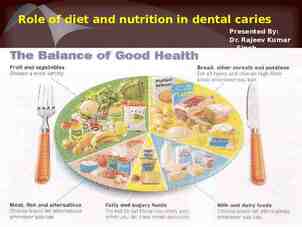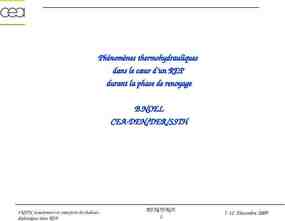Soil Compaction in Alfalfa Fields Ronald T. Schuler,
37 Slides5.50 MB
Soil Compaction in Alfalfa Fields Ronald T. Schuler, Professor Extension Agricultural Engineer Biological Systems Engineering University of WisconsinMadison
Soil Compaction Causes include combinations of: Wheel Traffic Tillage Precipitation Types Surface Subsoil
Loam soil by volume Non-compacted Compacted Soil Water Air
Compaction Issues Tires Size Inflation pressure Tire design, radial vs. bias Machinery Avoid wet soil Wheel alignment Machine selection Machine weight
Compaction Issues Tires Size Inflation pressure Tire design, radial vs. bias Machinery Avoid wet soil Wheel alignment Machine selection Machine weight
Contact Area-Size-Diameter (Firestone) Tire Size Radial Tires 18.4R34 18.4R38 18.4R42 18.4R46 Bias Tires 18.4-34 18.4-38 Tire Dia. 65.1 69.0 73.0 77.0 Area(in2) Flat 3”Sinkage 320 720 340 740 350 760 365 780 65.4 69.3 284 300 653 675
Contact Area-Size-Width (Firestone) Tire Size Radial Tires 16.9R38 18.4R38 20.8R38 Bias Tires 16.9-38 18.4-38 Tire Width 16.9 18.4 20.8 Area(in2) Flat 3”Sinkage 255 660 340 740 390 870 16.9 18.4 252 300 629 675
Compaction Issues Tires Size Inflation pressure Tire design, radial vs. bias Machinery Avoid wet soil Wheel alignment Machine selection Machine weight
Impact of Tire Pressure 18 psi 6 psi
Inflation pressure-slight tire bulge with the proper pressure on radial ply tires 6 psi 18 psi Bulge
Top View: Measured soil-tire interface stress (psi) distribution of an 18.4R38 tire
Compaction Issues Tires Size Inflation pressure Tire design, radial vs. bias ply Machinery Avoid wet soil Wheel alignment Machine selection Machine weight
Radial vs. Bias Ply Tires Contact Area
At Proper Inflation Pressure, Radials have greater Contact Area
Tractor Manufacturer Recommendations Tire Size – 18.4-34 Pressures-psi Axle Load (lbs) 5500 6000 6500 7000 7500 8000 8500 9000 9500 10000 Radial 6 7 7 8 9 10 12 13 14 15 Bias 16 16 16 16 16 16 16 16 16 16
Compaction Issues Tires Size Inflation pressure Tire design, radial vs. bias Machinery Avoid wet soil Wheel alignment Machine selection Machine weight
Impact of soil moisture on compaction (depth and sinkage) 0 4 Depth, In. 8 12 16 20 24 28 Hard dry soil Normal Wet soil
Compaction Issues Tires Size Inflation pressure Tire design, radial vs. bias Machinery Avoid wet soil Wheel alignment Machine selection Machine weight
Wheel alignment-harvester and wagon Wheels should follow in same track
Wheel alignmenttractor and wagon
Small Square Baler-Bottom Feed Wheels aligned-tractor, baler and wagon
Mid-Size Rectangular Baler Wheels aligned-tractor and baler
Compaction Issues Tires Size Inflation pressure Tire design, radial vs. bias Machinery Avoid wet soil Wheel alignment Machine selection Machine weight
Sickle Cutterbar-Roll Conditioner 14-foot width
Self-propelled mower-conditioner
Front self unloading wagon
Wheel Alignment –harvester and wagon
Dual rake merging two windrows
Merger - Picks up one windrow and places it on the adjacent one
Merging three windrows into one
System Comparisons-three cuttings per year Type1 Width2 (ft) Rake3 T-M/A5 Pull 13 None Pull 16 None Pull 13 Rake Pull 16 Rake Self-Prop 16 Rake 3.1 Self-Prop 16 Merge 3.0 Pull 13 Merge Self-Prop 13 Merge(Dbl) 2.8 1 Mower-conditioner-pull or self-propelled Self-Prop 16 Merge(Dbl) 2.3 2 Mower conditioner width, feet 3 Rake-to rake, merge or do not rake two windrows together 4 Area covered by wheel traffic if uniformly distributed 5 T-M/A – ton miles per acre Area4 4.0 3.4 3.2 2.7 50 44 35 33 32 32 3.4 37 27 32
Compaction Issues Tires Size Inflation pressure Tire design, radial vs. bias Machinery Avoid wet soil Wheel alignment Machine selection Machine weight
Tractor ballasting criteria Towed Load wt. vs. Towing machine wt. 1 to 1 Max.Speed mph 20 2 to 1 10 More than 2 to 1 Do not tow
Concluding Remarks Select appropriate tire Use proper tire pressure Align wheels Reduce traffic of large equipment Use safe towing machine weight
The End










































